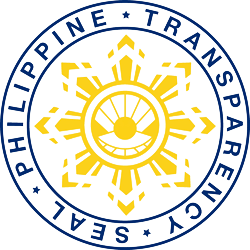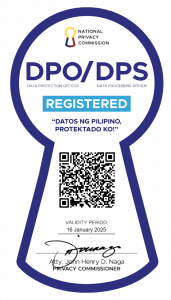Department of Information and Communications Technology (DICT) Secretary Gregorio Honasan, Department of Energy (DOE) Secretary Alfonso Cusi, our key players in the telecommunications company (telco) and data center industry, our colleagues and friends at the Foreign Trade Service Corps (FTSC) and the Philippine Trade and Investment Centers (PTIC), members of the media, ladies and gentlemen:
It is my pleasure to welcome all of you to witness what could be a milestone leading to our country’s economic breakthrough. Welcome to the launch of our campaign highlighting the Philippines as the next strategic hyperscaler hub in the Asia Pacific region! After being widely recognized as the outsourcing capital of the world, this is the natural next step for the Philippines as our country now has all the necessary elements in place to make this happen.
First of all, we have a thriving digital economy and a good economic profile. The digital readiness of our enterprises are helping propel our economic growth even further. The Philippine economic growth accelerated in the second quarter of 2021 to 11.8% compared to -17% in the same quarter in 2020. This is the highest gross domestic product (GDP) growth recorded since the fourth quarter of 1988.
Moreover, the industry will benefit from strong government support and a favorable regulatory environment. Hyperscalers can avail of incentives under the country’s Investment Priorities Plan. President Rodrigo Roa Duterte has also announced that the Philippines is inviting more investments to expand e-commerce and facilitate new modes of interaction and exchange as we become an active participant in the global digital economy.
We are promoting hyperscalers as the country’s next growth engine in our Make It Happen in the Philippines campaign, for a lot of reasons. Hyperscalers act as enabler of various industries and the backbone of digital-native industries such as financial technology and digital banking. Their increased presence will create a multiplier effect, especially with the potential increase in demand for renewable energy and data center developers. The investments of hyperscalers on tools and intellectual property will result in cheaper access to cloud technology which will extend and enhance the customer’s capabilities. Hyperscale platforms provide the ability to quickly and seamlessly handle immense volumes of activity and data. Their capability for integration with other systems make it cheaper for the customer to implement and integrate the platform.
In addition, they create potential investment value in terms of generating foreign direct investments, improving internet connectivity, investment in information technology (IT) infrastructure, manpower upskilling, and renewable energy. Indirectly, they will result in lower data cost for the country, cheaper cloud services, and improved customer experience for our e-commerce industry.
The Philippines’ digital landscape makes it an ideal setting for hyperscalers. According to the 2021 Digital Report, the Philippines remained the top country in social media and internet usage worldwide. E-commerce adoption in the Philippines grew from 70% in 2019 to 76% in 2020 and 80.2% in 2021. Our digital enterprises filled the void left by brick-and-mortar businesses affected by the community lockdowns. Online retail, delivery services, online entertainment, digital services, telehealth, work from home arrangements, digital payments—all of these helped us in the past year and continue to do so until now.
The Philippines is currently the social media capital of the world with 89 million active social media users. As of January this year, according to the Global Social Media Use Ranking, the Philippines ranked 6th in Facebook, 10th in Youtube, 11th in Twitter and 18th in Instagram.
Based on Department of Trade and Industry’s (DTI’s) Business Name Registration Next Generation System, the number of online businesses involved in retail trade jumped from 1,848 in the first quarter of 2020 to 88,575 by the end of 2020. Presently, the total number of online business names registered for retail trade is around 109,648. Hyperscalers can provide these businesses with scalable applications and storage portfolio of services to meet the growing demand of transactions.
The pandemic has forced us to maximize the use of the digital platform which accelerated the growth of the data center market. The Philippines now ranks second overall among the Southeast Asian countries, with Manila having a compound annual growth rate of 14.2%, next to Hanoi Viet Nam’s 14.5%. This poses a huge potential for the country and, according to the Frost and Sullivan research firm, the projected supply growth of data centers in 3 to 5 years for the Philippines is at 24%.
In terms of regulatory environment and government support, the Philippines has laws that ensure data protection and well-defined data ownership, such as the Cybercrime Prevention Act of 2012. We also have the Corporate Recovery and Tax Incentives for Enterprises Act or what we call the CREATE Law, which provides attractive incentives both to data center operators and hyperscalers. This law also features the government’s flexibility in granting fiscal and non-fiscal incentives for high-value strategic investments. We have also created a Central Business Portal for all business-related information and for faster transactions in availing of government permits and services.
Artificial intelligence or AI is supported by hyperscalers’ platform which is part of the growth drivers of the Philippines as a digital market. Just recently we have created the National Artificial Intelligence Roadmap, which will pave the way for establishing the Philippines’ National Center for AI Research.
Several other initiatives have been undertaken by the government to support the growth of the digital market, e-commerce, and industrialization, one of which is the Philippine e-Commerce 2022 Roadmap, which aims to increase the contribution of e-commerce to the Philippines’ GDP.
Another plus factor for the Philippines is the fact that we have a rich talent pool of young professionals. We have the second highest population in Southeast Asia, a very young and tech-savvy population with a median age of 25.7 years old. We have a ready workforce of 40 million, with an annual graduation rate of almost 800,000 yearly. The highest percentages of the graduates come from the engineering, IT and science fields.
We have high mobile phone connections at 152 million and 138% mobile penetration. This relates to the propensity to consume data and access services and content which will be delivered by hyperscalers. We have 73.9 million internet users, the second highest in Southeast Asia, with an average of 10.5 hours of internet usage per day.
The Philippines has a very promising business market that uses cloud-based technology. The Filipino’s widespread use of mobile streaming, social media networking, and the like is driving the demand for cloud services. The Philippines is also one of the fastest IT business process outsourcing (IT-BPO) markets in the region with BPO companies using cloud-based services to support their operations. The Philippine cloud computing market is expected to grow to three billion dollars by 2025.
As far as infrastructure is concerned, the country has adapted to the 5G network, with ongoing investments by telco companies. We have solid international connectivity, both outwards and within the country with 16 international cable systems—sub-sea cable builds, 13 cable landing stations, and local roll-out of 840,000 kilometers of fiber optic network. We host the presence of nine major commercial data center providers within 10 cities across the country. These data centers possess an estimated 19,000 total rack capacity.
In terms of energy requirements, we have identified companies that are sustainability-conscious and which are primarily potential sources of co-investments in renewable energy projects.
Later, we will see how the promotion of hyperscalers will also allow for public-private partnership. We will hear from DICT about the government’s initiatives on digitalization and connectivity. And from the DOE, about the government’s special initiatives to enhance power rate competitiveness. We also have the support of telco and data center operators such as PLDT, Globe, DITO, and Converge to name a few. We shall be hearing from PLDT later, and Meralco will likewise share with us their initiatives on renewable energy and sustainable business practices.
With the continuous improvement on the country’s economy, coupled by our relevant legislations, promising economic profile, and strong government support on hyperscalers, we shall make this happen. Indeed, we will Make it Happen in the Philippines with a whole-of-society approach—that is, all of us working together to build back better in the post-pandemic tomorrow as envisioned by President Rodrigo Roa Duterte.
Maraming salamat at mabuhay tayong lahat. ♦
Date of Release: 1 September 2021



